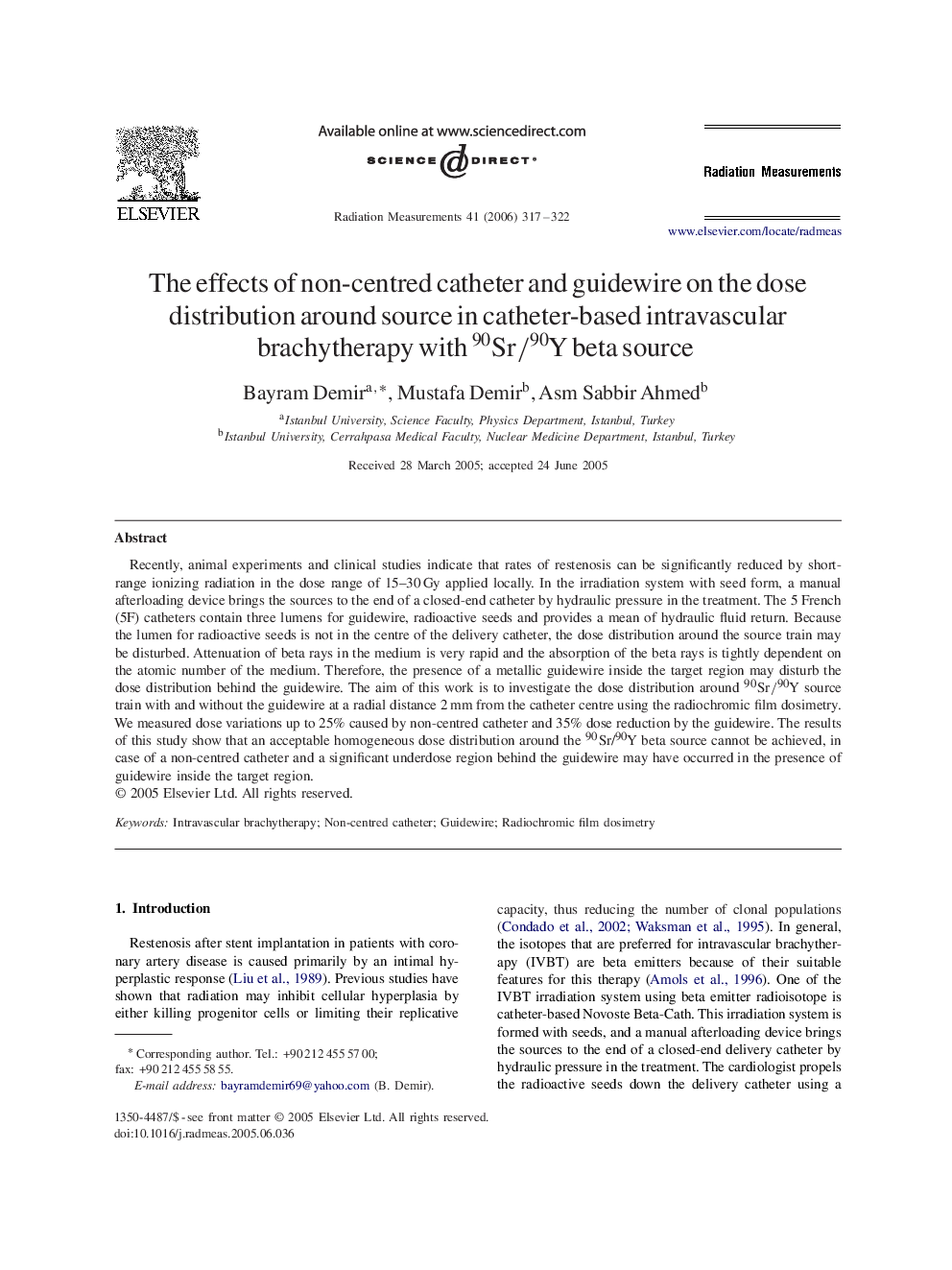| Article ID | Journal | Published Year | Pages | File Type |
|---|---|---|---|---|
| 1885591 | Radiation Measurements | 2006 | 6 Pages |
Recently, animal experiments and clinical studies indicate that rates of restenosis can be significantly reduced by short-range ionizing radiation in the dose range of 15–30 Gy applied locally. In the irradiation system with seed form, a manual afterloading device brings the sources to the end of a closed-end catheter by hydraulic pressure in the treatment. The 5 French (5F) catheters contain three lumens for guidewire, radioactive seeds and provides a mean of hydraulic fluid return. Because the lumen for radioactive seeds is not in the centre of the delivery catheter, the dose distribution around the source train may be disturbed. Attenuation of beta rays in the medium is very rapid and the absorption of the beta rays is tightly dependent on the atomic number of the medium. Therefore, the presence of a metallic guidewire inside the target region may disturb the dose distribution behind the guidewire. The aim of this work is to investigate the dose distribution around 90Sr/9090Sr/90Y source train with and without the guidewire at a radial distance 2 mm from the catheter centre using the radiochromic film dosimetry. We measured dose variations up to 25% caused by non-centred catheter and 35% dose reduction by the guidewire. The results of this study show that an acceptable homogeneous dose distribution around the 9090Sr/9090Y beta source cannot be achieved, in case of a non-centred catheter and a significant underdose region behind the guidewire may have occurred in the presence of guidewire inside the target region.
